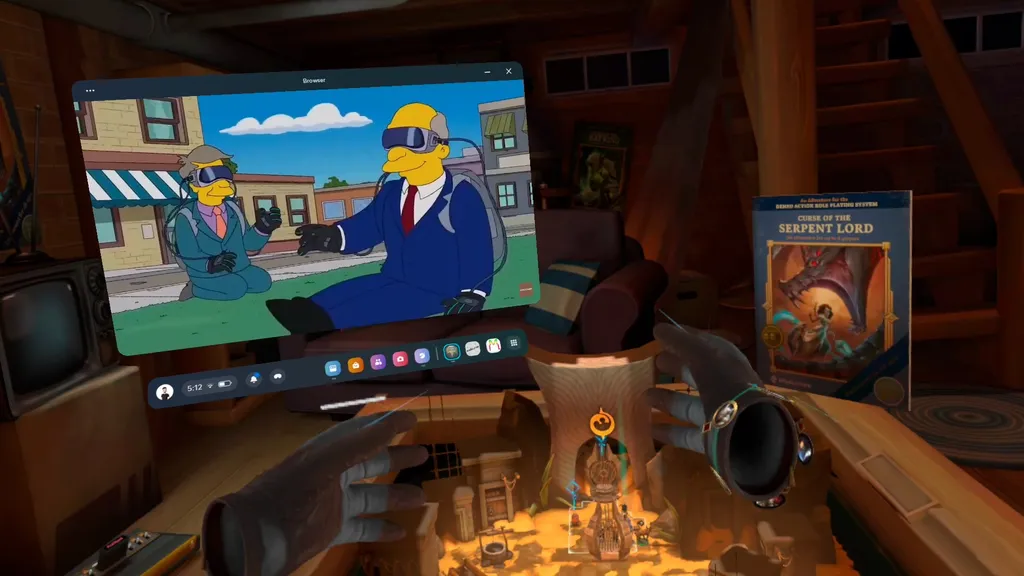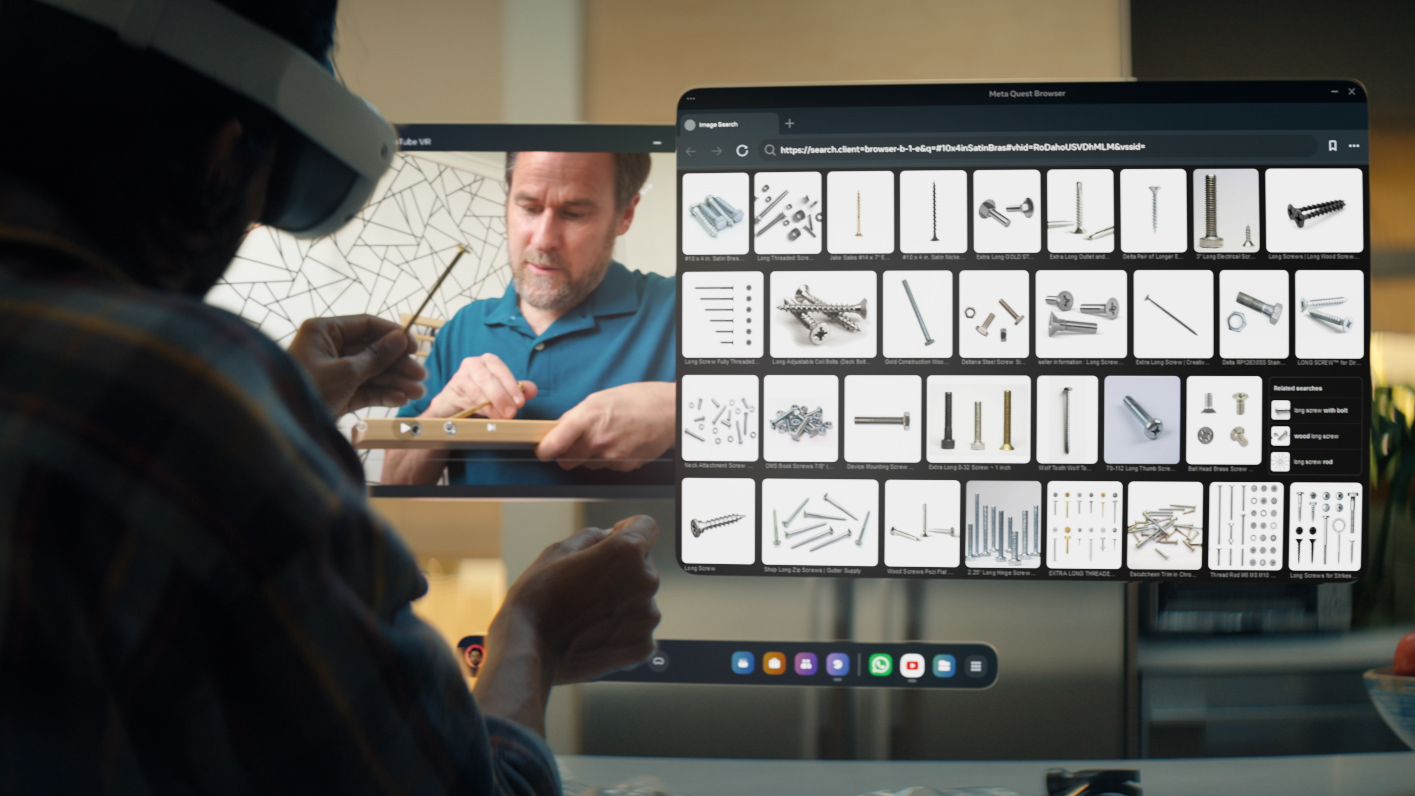The Quest v69 update brings multitasking improvements, an adaptive brightness option, spatial audio for windows, and a range of other improvements to Meta's mixed reality platform.
As with all Quest updates, v69 will "roll out" gradually, so it may take a few days or even weeks for your headset to get the v69 update.
This will likely be Meta's last system software update before its Connect conference, set for September 25-26, where the company is expected to launch a cheaper version of Quest 3 and announce upcoming improvements to the Horizon OS platform its headsets run.
Free Window Positioning No Longer Experimental
In v67 Meta introduced an experimental option called New Window Layout, which lets you pull out up to three 2D windows and position them freely in space, in addition to the three windows you can attach to your dock, for a total of six windows.
It also added the new ability to take any window fullscreen, which makes it much larger, allows you to dim the background, and temporarily hides the full dock and other windows.
With v69 New Window Layout is no longer an experimental option. It's now just how Horizon OS works, enabled for everyone.
Seamless Multitasking
Since launch for Quest Pro and Quest 3 and since early 2023 for Quest 2 you've been able to bring up the browser or other 2D windows while inside an immersive app. And since v62 you've been able to bring up the up to three 2D windows you had in the home space in these apps.
But to resume interacting with the immersive app again, you needed to minimize the 2D windows you had open.
Footage by UploadVR.
v69 adds a new Seamless Multitasking experimental option, which we previously reported on when it appeared in the Public Test Channel. Enabling it lets you continue to interact with the immersive app while your 2D windows are open.
This means you can, for example, watch Netflix or YouTube while playing a VR game. It has a performance penalty, but apps that use dynamic resolution should scale down their resolution to adapt.
Content-Adaptive Brightness Control
Meta previously said that Content Adaptive Brightness Control (CABC) would be a new Quest 3 experimental option added in v68, but we aren't aware of anyone's headset actually getting the feature.
Now the company says the feature is coming in v69.
CABC already exists in some LCD TVs and LCD monitors. It works by dimming the backlight in darker scenes to achieve deeper blacks that are closer to true black than the murky grey typically achieved by LCD. Constant brightness changes can be off-putting in content with greatly varying visuals though - we'll be curious to see how well Meta's CABC handles this.
Spatial Audio For 2D Windows
While almost all immersive apps on Quest use spatial audio, until now sound from 2D windows did not.
With v69 2D windows will have spatial audio, meaning audio emitted by them will sound like they're coming from the window's position in space.
This is on by default, but can be turned off in the settings if you don't want it.
Remove Apps From Library
In v66, released back in June, Meta claimed you would now be able to hide apps from your library, such as demos and experiences you tried out for a few minutes and don't want to use again. But like CABC with v68, the feature didn't actually arrive.
Meta now says this long-requested capability is being added in v69, but we'll have to see it to believe it this time.
Frictionless Home Environment
Quest 3 starts in passthrough mode. When you click the button to toggle into immersive mode, loading your virtual home environment, you normally had to confirm the room-scale boundary or draw a new one if the headset can't recognize your room.
With v69, Meta says you'll now be loaded into a stationary boundary by default. You'll only have to draw a room-scale boundary when launching into an immersive VR app.
Bluetooth Quick Pairing
Quest v69 adds a new option to get a notification when a nearby Bluetooth device enters pairing mode, meaning you won't need to manually navigate to Bluetooth settings.
Meta says this will work for all supported Bluetooth devices including headphones, keyboards, mice, and gamepads.
New Home Environment: Oceanarium
Meta says v69 includes a new Horizon Home environment called Oceanarium.
Here's how it describes Oceanarium:
Immerse yourself in an underwater world filled with seaweed and anemones that flow with the gentle ocean currents. Get up close and personal with sea turtles, manta rays, and even a majestic whale while you experience the beauty of the ocean like never before.






























